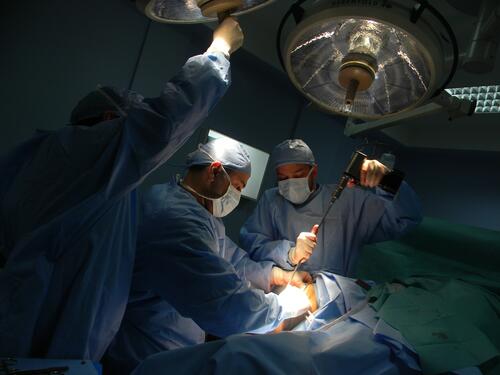Tell us about yourself and your role at the Amman project?
My name is Dr Ali Al-Ani and I am from Iraq. I moved with my family from Iraq to Amman in 2005 because the security situation was very dangerous and it was impossible to live a normal life. I began working with the project as an orthopedic surgeon in 2007.
What kind of patients do you see?
Our patients are victims of conflict in the region. For the first two years of the project, we received only patients from Iraq. In 2008, we expanded and started to accept patients from other countries affected by violence in the region – we’ve since received patients from Gaza, Yemen and Syria. The majority of the cases that we deal with are complicated.
What kind of cases can be accepted on the project?
Our selection criteria cover three specialties: orthopedic, maxillofacial and plastic surgery. Many of our patients have bone infections, requiring lengthy treatment procedures. We also receive patients whose broken bones have not fused properly, with or without soft tissue defect, as well as patients with bone loss, nerve injuries, and associated physical deformities as a long-term consequence of untreated trauma.
Due to the nature of conflict-related injuries, each new case is a challenge and each wounded patient is incomparable to another.
How are you affected personally by your work?
I am a surgeon but I am also a human-being and affected by what I see in my work. I feel pain when I am face-to-face with innocent children and older men and women whose lives have been forever changed by man-made conflict. But as a surgeon, I am in a position to treat these vulnerable people, to make them smile and enjoy a sense of independence again. I feel proud that this project has relieved the suffering of so many patients – by reconstructing their injured bodies and helping them to regain functionality – especially as those who are referred here may not be able to afford such care otherwise.
Each patient has their own story of a life affected by war. But the story of a seven year old Iraqi boy who was admitted to the project in 2009 touched me most. Wael was on his way to visit his grandparents when a roadside bomb exploded. His mother was killed and Wael was badly injured. He lost his right leg and his left leg was severely damaged. Despite the complexity of the surgeries, over the course of several operations the surgical team was able to reconstruct his damaged leg sufficiently for it to bear weight, and to attach prosthetics, so that Wael was able to walk again.
What difficulties do patients face when they return to Iraq?
The main difficulty is access to follow-up treatment back home. This includes psychosocial support and physiotherapy. Although we try to finalise treatment in Amman, these injuries often require a lot of follow-up after surgery, and this is a big challenge.
What are your hopes for the future of the project?
The project has expanded considerably since 2006, and we have positive plans for the future. We will soon be moving to a new facility which will improve the quality of care and increase the project’s technical capacity and scope. It may also allow us to add new types of surgery.



